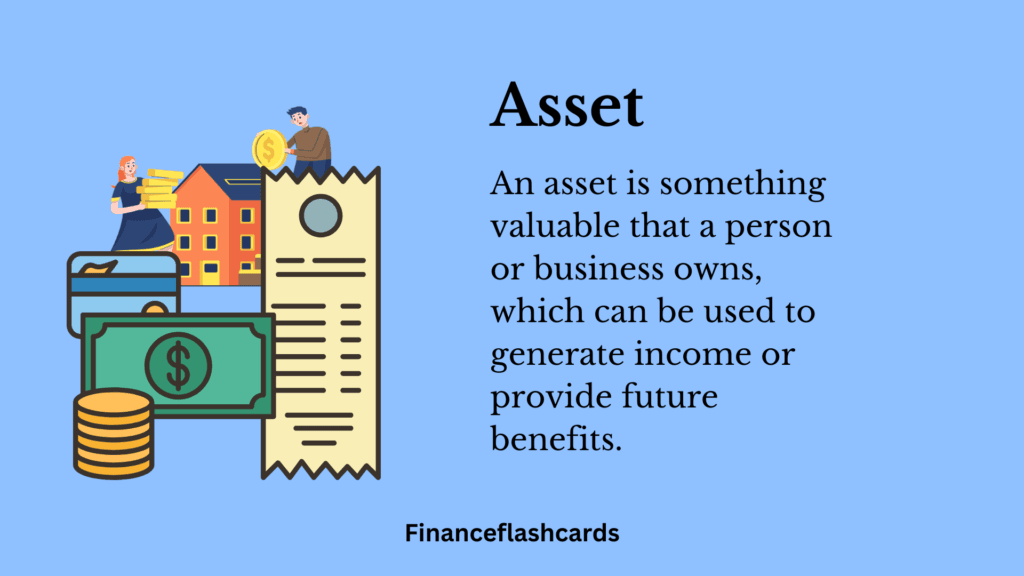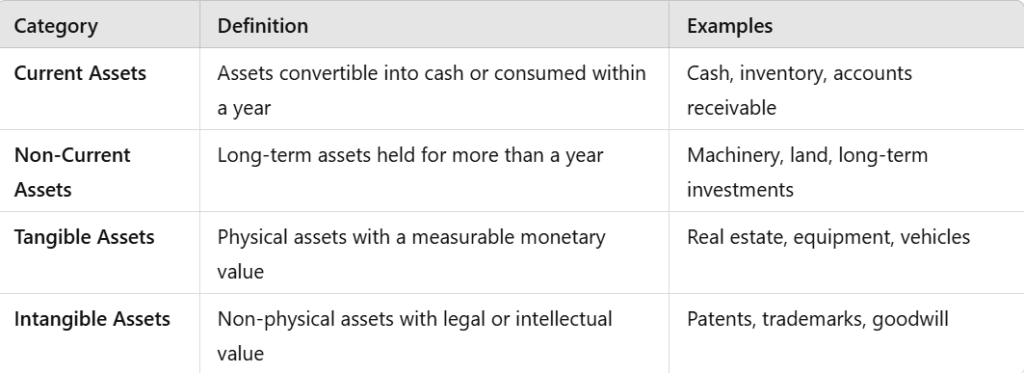An asset is something valuable that a person or business owns, which can be used to generate income or provide future benefits. An asset is key in measuring financial health and stability.
Table of Contents
What Is An Asset?

Understanding Assets
In the case of businesses, an asset may be something that has the potential to generate cash flow, reduce expenses, or improve sales, regardless of whether it’s a tangible asset like manufacturing equipment or a fleet of trucks or an intangible asset like a patent or a trademark.
Types of Assets
Assets are brodly categories on the basis of physical presence or on the basis of liquidity.
On the basis of physical presence, assets are classifies as either tangible assets or intangible assets.
Tangible Assets: These are physical items with monetary value, such as land, buildings, vehicles, and inventory. They are visible and measurable.
Intangible Assets: These non-physical resources derive value from intellectual or legal rights, like goodwill, copyrights, and software. They are vital for modern businesses.
On the basis of liquidity, assets are classifies as either current assets or non-current assets
Current Assets: These are short-term resources expected to be converted into cash or consumed within a year. Examples include cash, accounts receivable, inventory, and prepaid expenses. They ensure liquidity and smooth day-to-day operations.
Non–Current Assets: These are long-term resources used over multiple years to support operations or generate revenue. They include fixed assets like property, plant, and equipment, as well as intangible assets like trademarks and patents.

Importance Of Assets
Real-Life Examples
Similarly, real estate has historically been a stable and appreciating asset, offering individuals a hedge against inflation and businesses a long-term investment. These examples underscore the diverse and vital role assets play in achieving financial goals.

